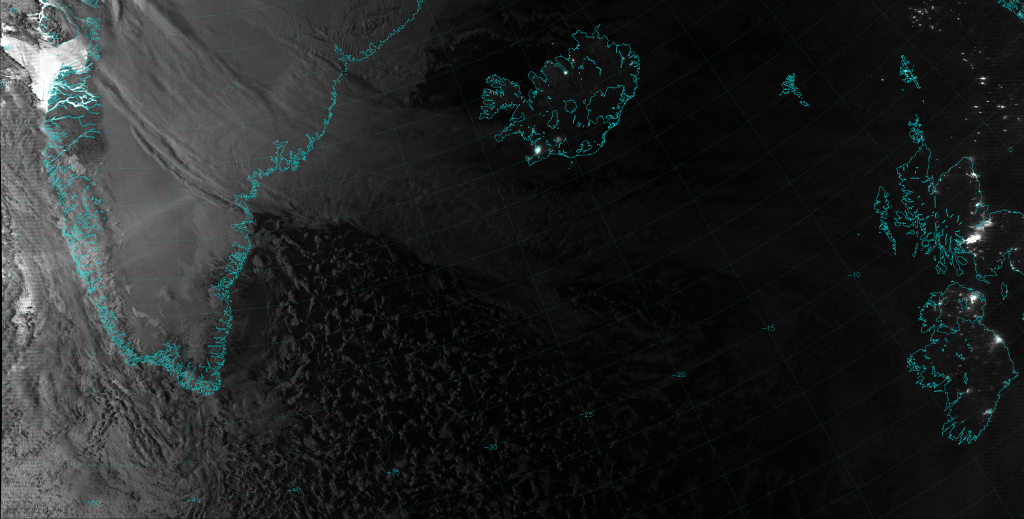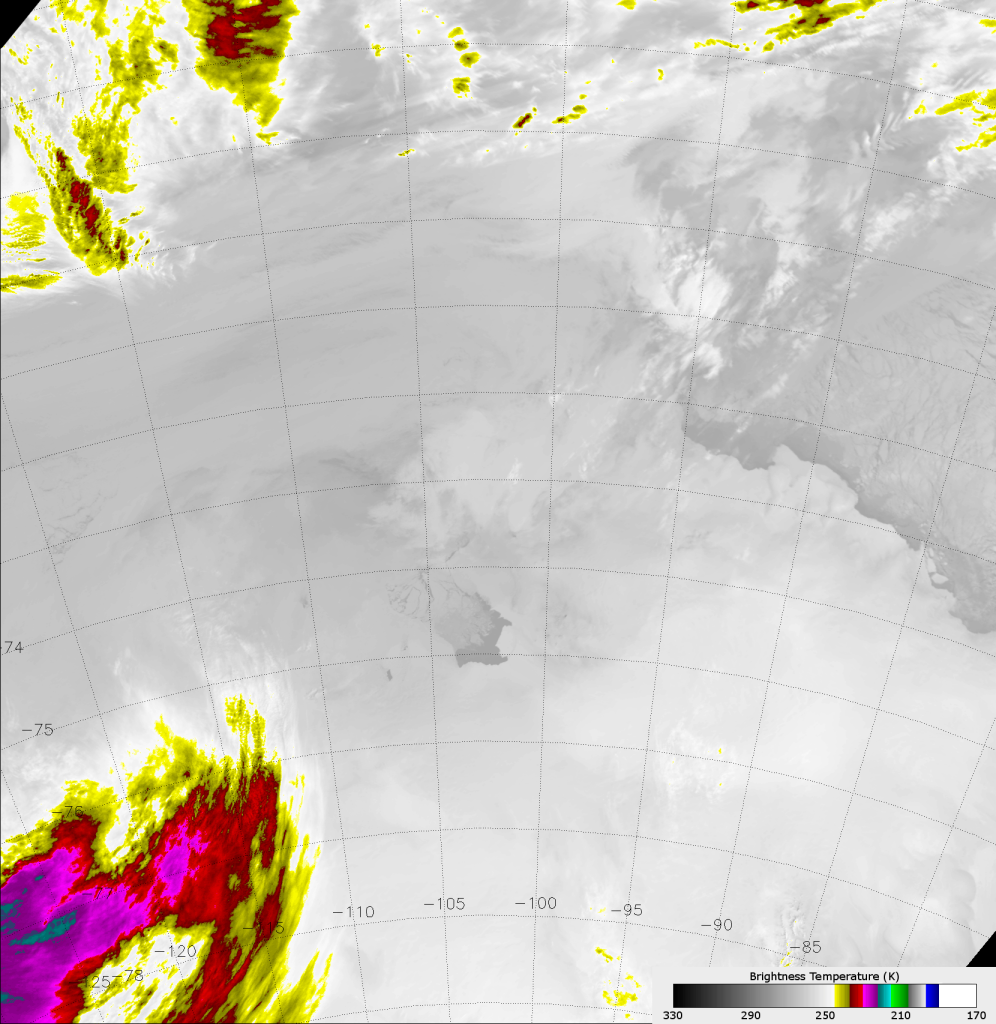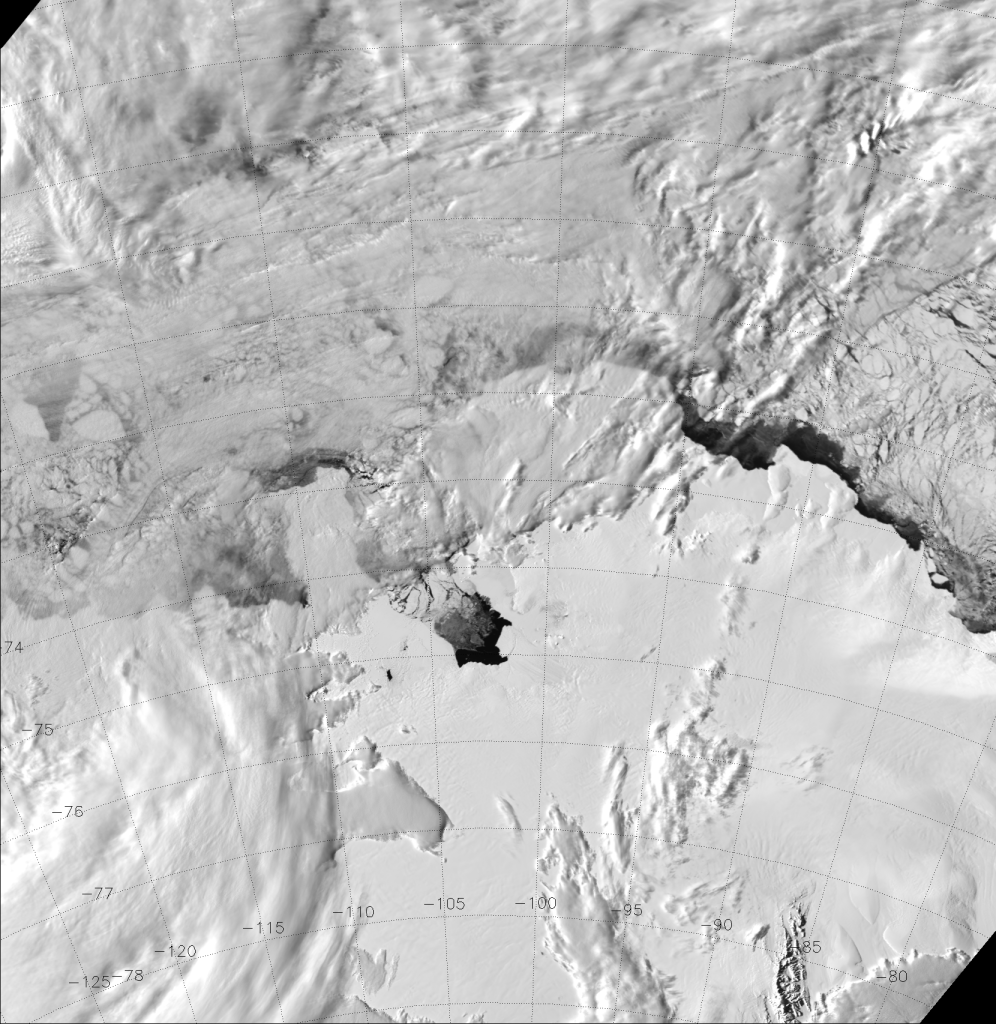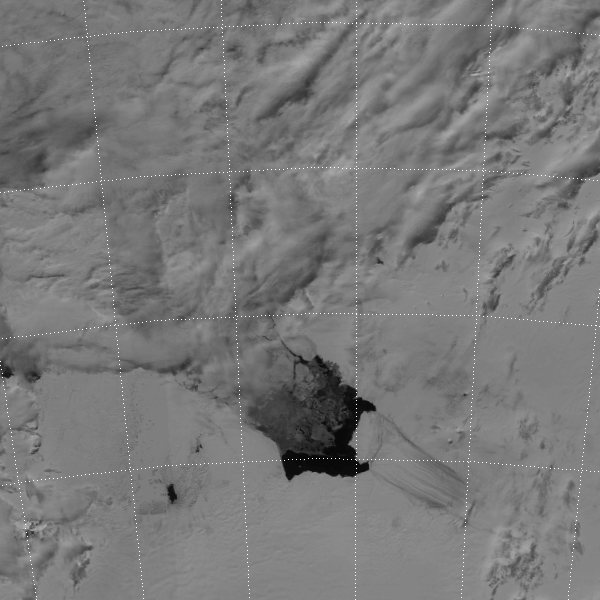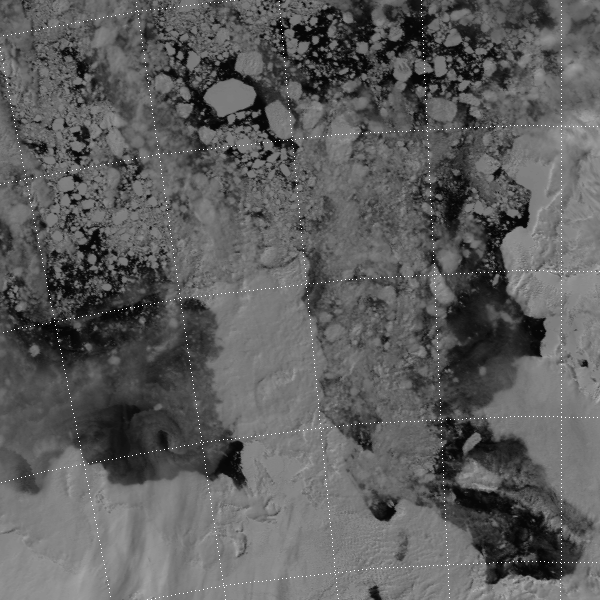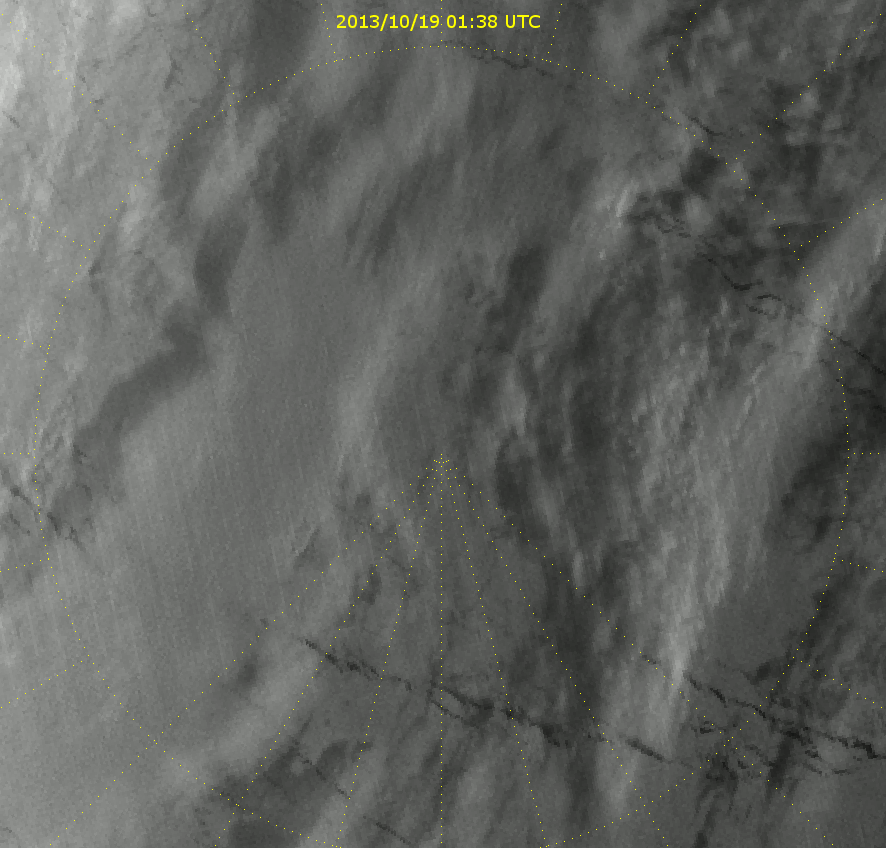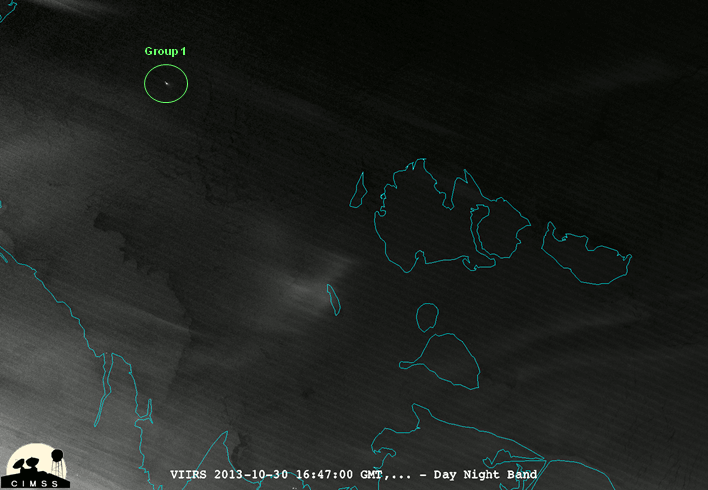Imagine you’re getting ready for bed. You take one last look out of your bedroom window and you see this:
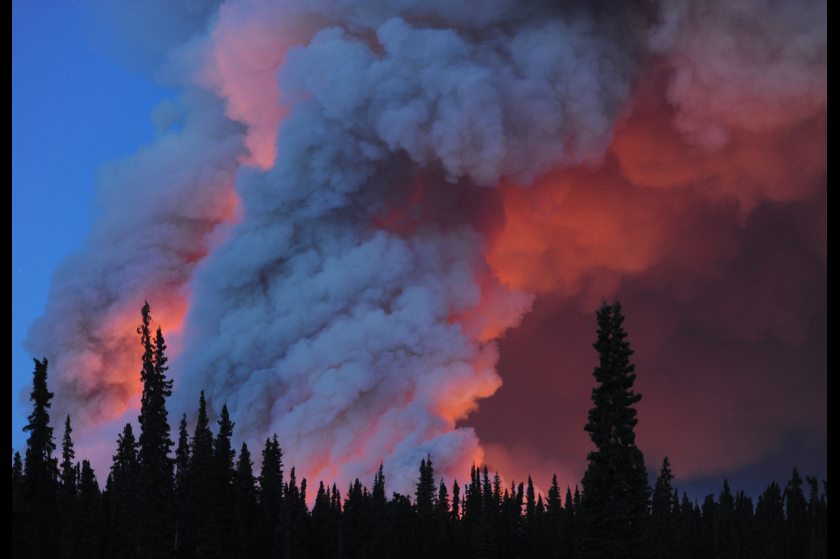
Good luck sleeping!
That is the light and smoke from the Funny River Fire, which started on 20 May 2014 and rapidly grew to over 44,000 acres in under 48 hours. Rapidly expanding fires like this one burn through a lot of fuel and can create a lot of smoke. Enough smoke to be seen by radar:
And certainly enough smoke to be seen from space:

Look for the grayish plume arcing from the Kenai Peninsula out over the Gulf of Alaska. That is one impressive smoke plume!
The image above is what we like to call a “True Color” image. It is a combination of the red, green and blue visible-wavelength channels of VIIRS (M-5, 0.67 µm; M-4, 0.55 µm; M-3, 0.48 µm, respectively), so named because it represents the “true” color of objects as the human eye would see them. It is the most commonly used “RGB composite”, which is why a number of people simply refer to it as the “RGB”. To add more confusion, other people call it “Natural Color” because it is only an approximation of the “true” color and has to be corrected for atmospheric effects (i.e. Rayleigh scattering) to look right. However, we want to distinguish this from the EUMETSAT definition of “Natural Color”, which looks like this:

Notice that the smoke plume isn’t as easy to see in the Natural Color image. This is because we are looking at longer wavelengths {1.61 µm (I-3, red component), 0.87 µm (I-2, green component) and 0.64 µm (I-1, blue component)} and smoke scatters less solar radiation back to the satellite as the wavelength increases. This is also why the smoke appears blue – the only channel of the three really able to see the smoke plume is I-1 (the blue component). The fact that we are able to see the smoke at all in the Natural Color image is a testament to just how much smoke there is!
Here’s another Natural Color image from a few orbits before, which happened to be right after sunrise:

The smoke plume is as optically thick as a cloud, and is even casting shadows!
Now, the Funny River Fire is the perfect opportunity to introduce another RGB composite being developed at CIRA for use with VIIRS, which we call the “Fire Temperature RGB”. This RGB composite uses the near-IR and shortwave-IR channels to highlight fires. The blue component is M-10 (1.61 µm), the green component is M-11 (2.25 µm) and the red component is M-12 (3.70 µm). Here’s what the Fire Temperature RGB looks like for the 21:58 UTC overpass:

This is yet another example of just how large a fire this is!
The Fire Temperature RGB provides information on how hot (or how “active”) the fire is. This is due to the fact that fires generally show up best around 4 µm. At shorter wavelengths, the amount of background solar radiation increases, so fires need to be hotter to be visible. This means that relatively cool or small fires will only show up in M-12 and appear red. Hotter fires will show up in M-11 and M-12 and appear yellow. The hottest, most active fires will be detected in all three channels and show up white. Also, there’s very little sensitivity to smoke, as you can see, so the imagery provides useful information even with such a thick smoke plume. Due to radiative differences between liquid droplets and ice particles, ice clouds tend to appear dark green, while liquid clouds appear more blue.
At night, M-11 doesn’t produce valid data (although there is a push from several user groups to change that), but M-10 and M-12 still provide valuable information. In fact, the only thing you can see at night in M-10 are fires and gas flares. Even without M-11 at night, we can use the Fire Temperature RGB to monitor the fire around the clock (whenever VIIRS is overhead) and here’s an animation to prove it:
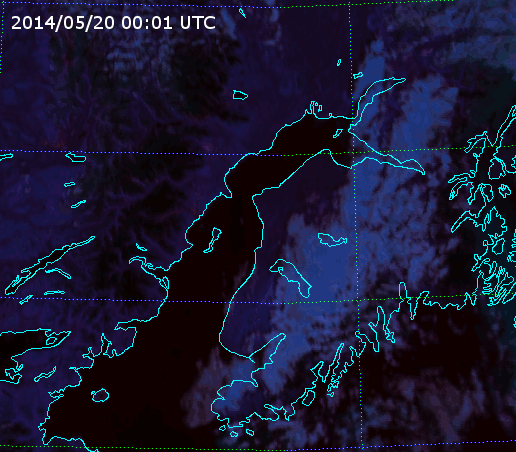
In the first frame, the fire is obscured by clouds (we still can’t see through those) but, after that, you can see the fire was pushed to the shores of Tustumena Lake. With nowhere else to go, the fire expanded east and west. The fire slowly loses intensity until the last two frames, when activity picks up on the north side. (Although, clouds block the view of the east flank of the fire at that time, so we can’t say how active it is there.) Also notice on the second and third nights (11:00 to 13:00 UTC) that the fire appears less intense. This is probably due to the combination of reduced fire activity at night and the presence of clouds that are not visible at night in this RGB composite.
Here’s what the Funny River Fire looked like in the high-resolution fire detection channel (I-4, 3.74 µm) for the same times:
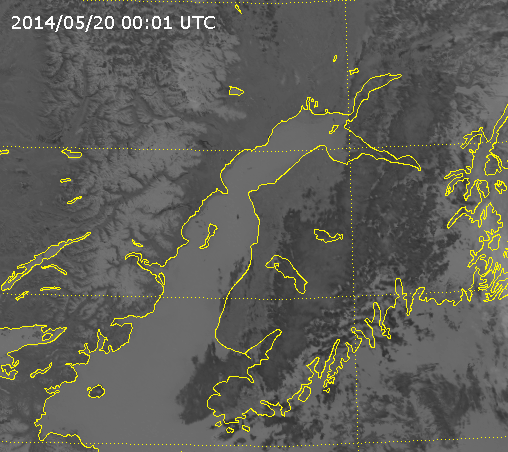
For this image, cooler pixels appear light, while warmer pixels appear dark. Pixels with a brightness temperature above 340 K have been colored. This channel by itself shows the clouds over the fire at night, but it can be ambiguous during the day because liquid clouds are highly reflective at this wavelength, so they also look warm.
It has already been demonstrated that the Day/Night Band is capable of detecting fires at night (click here and here for examples). So, why not just use it here? I tell you why: the day/night terminator is already encroaching on the nighttime overpasses. This makes it difficult to see fires, since the light from the fire is competing with light from the sun. This was a particularly intense fire on the first night though, so the Day/Night Band was able to see it (as evidenced by this Near Constant Contrast [NCC] image):

As you can see, the NCC product shows both the fire and the smoke plume. Notice also that you can’t see any city lights, even though it’s still nighttime over the fire because there is enough twilight to drown out the signal. That makes fire detection with the Day/Night Band tricky when the terminator is so close. It’s only because the Funny River Fire was so intense that we are able to see it. Of course, since it was so intense, we are able to see the smoke easily even if we can’t see the light from the fire.

